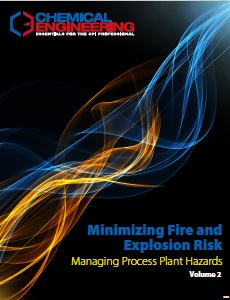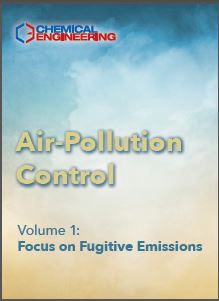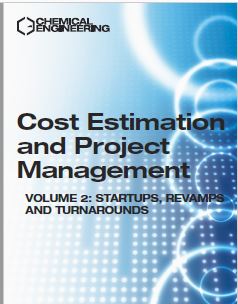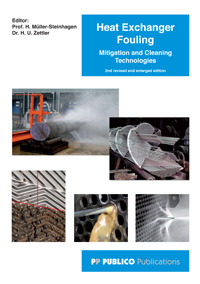Description
All chemical process plants that routinely handle fuels, chemicals, other potentially flammable and explosive fluids, and combustible dry powders have a risk of fire and explosions.
The proper identification of potential hazards, the use of proper engineering design strategies, and appropriate instrumentation and control systems can greatly reduce risk and help to minimize the damage in the aftermath of such an occurrence.
This Chemical Engineering Guidebook provides a variety of practical engineering articles to help facilities maximize safety and minimize the risk of fire and related damage to the facility and personnel. Provided are tips for facilities to assess potential risks and take the necessary engineering steps to protect personnel and plant assets.
Articles focus on handling potentially explosive liquids and dry powders, operating vacuum systems, distillation systems, and more. Also included is proper tank and pipeline design guidelines.
This volume consists of several articles related to proper management of Material Safety Data Sheets (MSDSs) and selecting the right protective gear for plant personnel.
Delivered in a PDF. 200 pages.
Articles Include:
How to Handle Hydrogen inn Process Plants
• Process-unit layout, piping, instrumentation/control and materials of construction are but a few of the technical issues requiring special attention during the design or retrofitting of process plants that use hydrogen as a raw material
A Checklist for Safer Chemical Batch Reactions
• A good understanding of the reaction chemistry is needed for a safe process design
Designing Safer Process Plants
• Several often-overlooked strategies to increase inherent safety are discussed here
Runaway Reactions: Ignore the Chemistry at Your Peril
• Proper hazards testing is key to ensuring chemical process safety
Preventing Self-Heating and Ignition in Drying Operations
• Incident investigation reveals that the most common root cause is lack of understanding
Engineering for Plant Safety
• Early process-hazards analyses can lead to potential cost savings in project and plant operations
Designing Atmospheric Storage Tanks
• Insights into the basics of process design of atmospheric storage tanks and an example of how to prepare a process datasheet are presented here
Gas Detection
Batch Drying With Vacuum Contact Dryers
• Drying is a demanding unit operation where solvents need to be removed without altering product chemistry. Vacuum dryers are essential pieces of equipment for accomplishing this task
Dust Hazards
Chemical Protective Clothing
Gas Hazard Definitions and Data
Static Electricity Discharge and Fire Prevention
Clearing the Air About Respiratory Protection
• Learn the basics about selection and regulatory compliance for these potentially life-saving devices
Eye-and-Face Personal Protective Equipment
• Protecting the eyes and face in the workplace is imperative to preventing the estimated 10–20% of work-related eye injuries that result in temporary or permanent vision loss
Managing Compliant MSDSs and Labels
• Compliant MSDS programs depend on inventory management, regulatory knowledge and consistent authoring
Design Safer Solids Processing Plants
• This approach defines a systematic framework and points toward relevant sources in the public domain
Process Hazards Analysis Methods
Finding the Right Gloves to Fit the Application
• There is a wide range of gloves available for hand protection on the job. Matching gloves to their chemical-resistance properties is one criterion for selection
Dust Control in the Chemical Processing Industries
• The prevention of dust hazards in the CPI is integral to process-safety management — widereaching mitigation schemes must be implemented
Cybersecurity Defense for Industrial Process-Control Systems
• Security techniques widely used in information technology (IT) require special considerations to be useful in operational settings. Here are several that should get closer attention
Piping Design for Hazardous Fluid Service
• Extra considerations and precautions are needed beyond the requirements of codes and standards
Alarm Management
Prevent Combustible Dust Explosions with N2 Inerting
• Targeted use of blanketing with inert gas offers an effective strategy for preventing combustible dust explosions in CPI facilities
Industrial Combustion Products
Pressure-Relief System Design: Developments and Deficiencies
• Areas of recent activity for pressure-relief systems include new calculation methods and updates to existing codes and standards. Included here is an overview of recent developments and a look at the results from a recent study of pressure-relief system deficiencies and solutions
Insulating Heat-Transfer-Fluid Piping
NFPA 652: Standardizing Combustible Dust Standards
• The latest NFPA standard applies to many industry sectors, and aims to address the fragmented nature of the industry-specific standards currently in place
Managing Material Safety Data Sheets in the Workplace
• While regulatory agencies outline requirements for communicating chemical hazards, the format of compliance is up to the employer. Software tools can be helpful aids in meeting these requirements
Dust Explosions: Prevention & Protection
• Understand what causes these disasters and then put these practical measures in place
Piping Design for Potentially Lethal Chemicals
• Integrity and reliability are critical for piping and equipment that handle chemicals with extreme health hazards
Safety in Sulfuric Acid Storage Tanks
• Commonly used in the CPI, sulfuric acid requires many special precautions to ensure its safe handling and storage
Dust Management in Bulk-Material-Handling Operations
• Dust management can be divided into three main categories: prevention, containment and suppression. Understanding the key considerations for each can help bulk solids handlers arrive at an optimal dust control solution
Filter Aids
Preventing Dust Explosions
• Risk management programs are critical for safe handling and processing of combustible dust as well as for OSHA regulatory compliance
Compressed Gases: Managing Cylinders Safely
• Follow these recommendations to ensure the safe handling, storage and use of gas cylinders
Reduce Hazards in Process Vacuum Systems
• Reduce explosion risks, and chemical and physical hazards, to ensure safer operation of vacuum pumps and related systems
Piping Codes: What the CPI Engineer Should Know
• An overview of the codes and standards that are most pertinent to chemical processing facilities
Cybersecurity: You Cannot Secure What You Cannot See
• Follow this guidance to understand today’s cybersecurity risk landscape and take the necessary steps to create a sound industrial control system cybersecurity program, including the development of a comprehensive, in-depth cyber-asset inventory
Tolerable Risk
• While determined risk is generally well understood, tolerable risk can be the missing link to complete risk assessments
Vacuum Systems: Recommendations for Safe Operation
• Follow this guidance to ensure that steam ejector systems, mechanical vacuum pumps and integrated vacuum systems are designed, operated and maintained to ensure process safety




